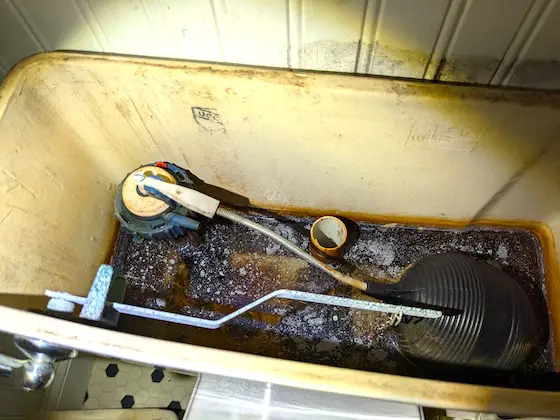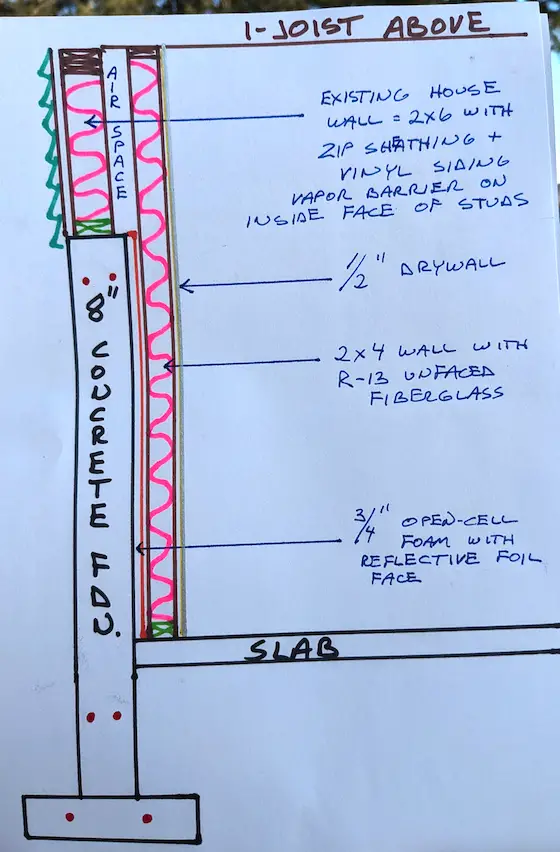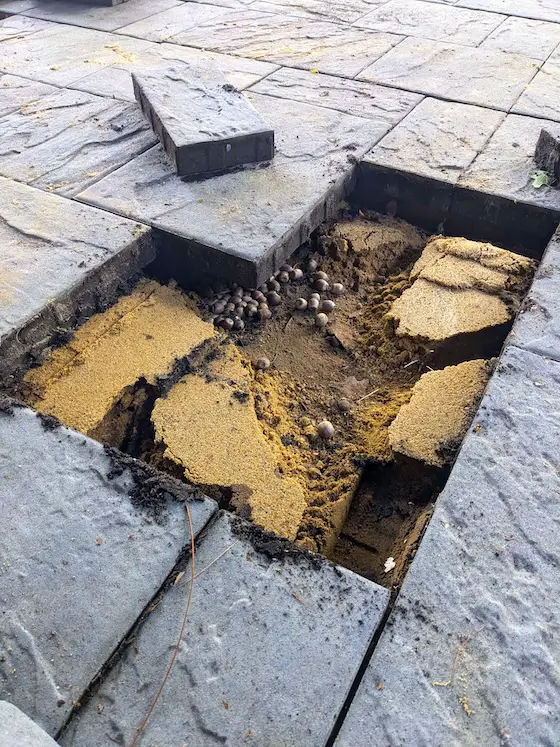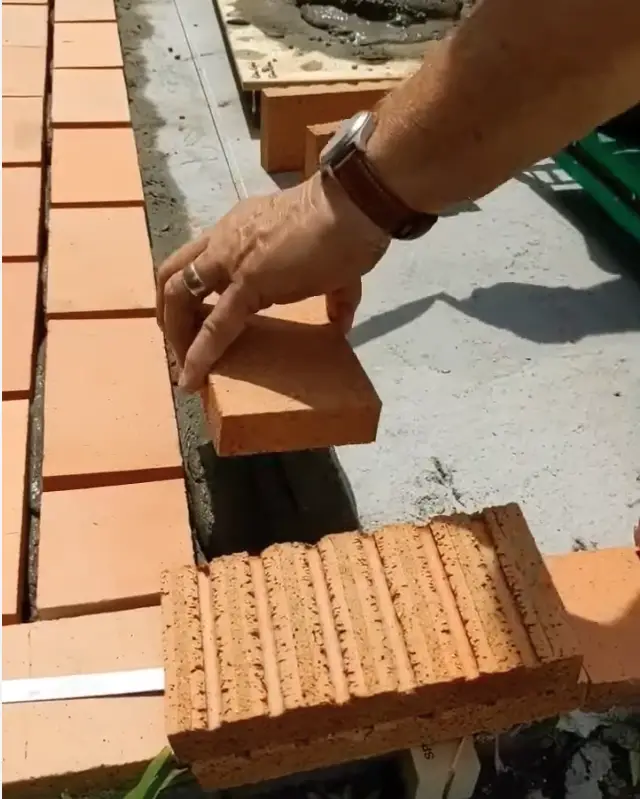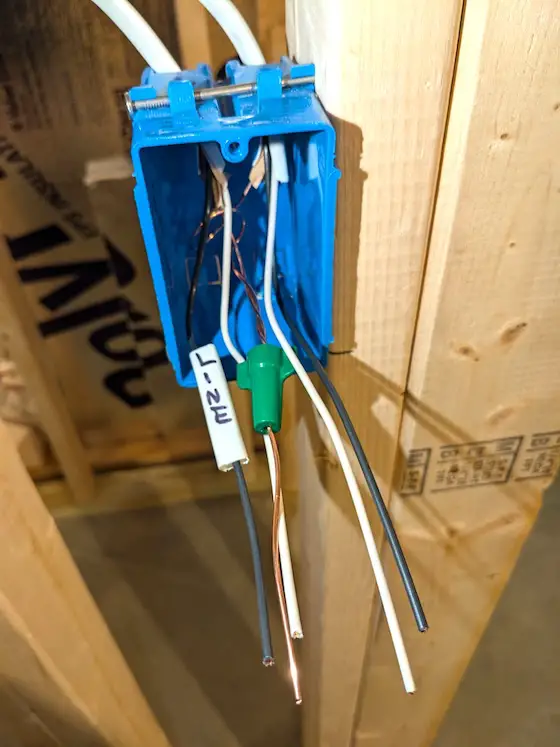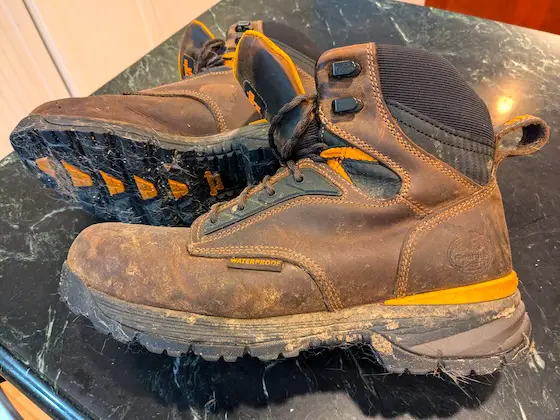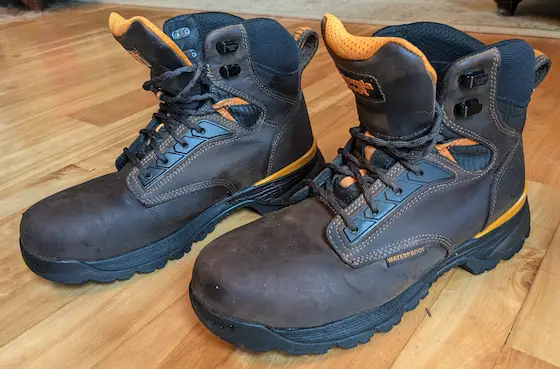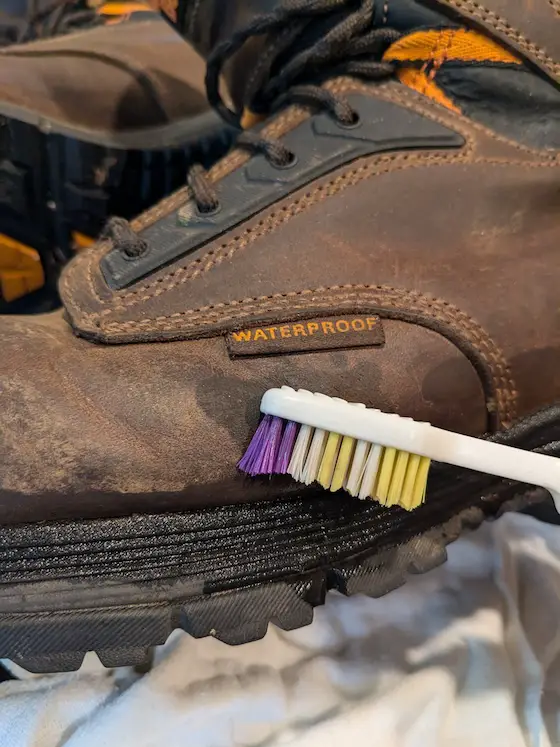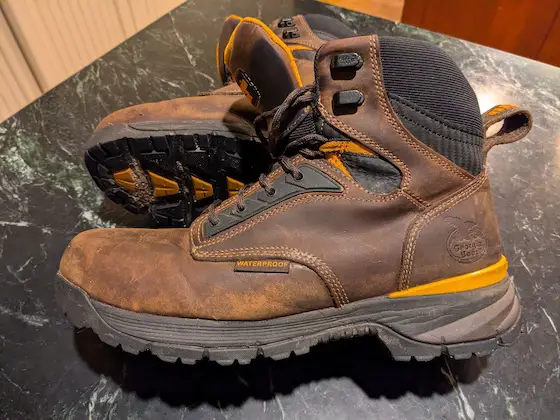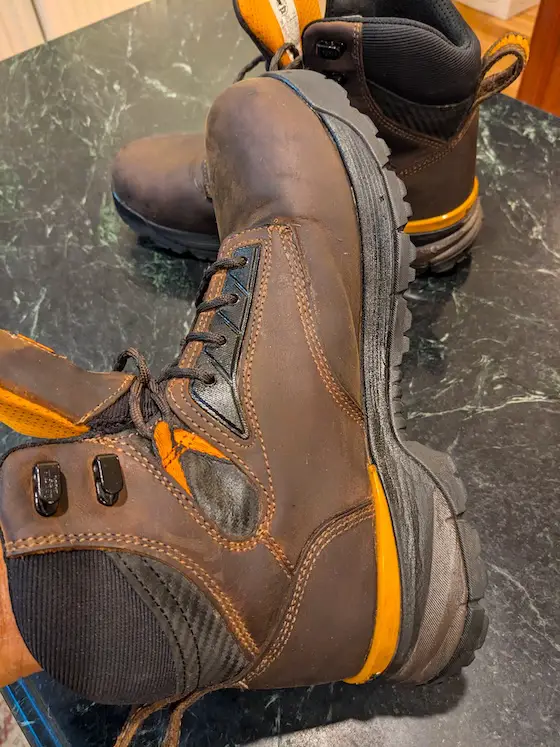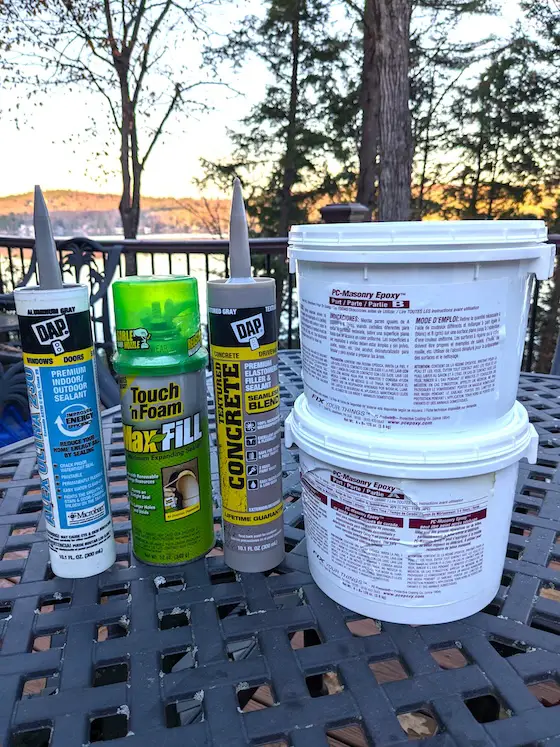
Repair Concrete Cracks - Which of these products is the best way to patch a crack in a concrete wall? The answer might surprise you. CLICK HERE if you are impatient. Copyright 2024 Tim Carter
Repair Concrete Cracks - Many Bad Options
Several days ago I had a texting exchange with a very smart single woman who attends my church. She reached out to me the day before with a photo of water inside her garage and another showing a crack in the garage foundation wall near the water puddle. A rain shower happened the day before after weeks of no rain.
My wife and I have become friends with her. We go out to dinner with this woman every now and then. I’ve done some emergency repair work for her at her condominium. Understand this woman is fearless and possesses a will stronger than titanium. I admire all of these qualities. They come in handy when you have to deal with contractors.
It’s important to realize this woman’s job is reading contracts to discover loopholes that could cost her company money. She’s an expert at making sure contracts are crystal clear. The young lady also helps craft specifications included in these contracts.
I, on the other hand, have thirty years of experience listening to the sorrowful lamentations from homeowners just like you who hired a contractor hoping he would do the right thing. I’ve received tens of thousands of emails from homeowners sharing their dissatisfaction with the work done at their homes. Your local BBB office will confirm that contractor complaints are at the top of their list.
I made the mistake of sending extra information to this busy woman. All she asked me when she sent me the photos was, “What trade do I hire to fix this problem?” I replied, “a handyman.” I should have stopped there. I thought giving her more information would ensure the repair would be done right.
Very early the next morning I decided to write up a short step-by-step summary describing how the crack should be repaired. If you have a crack at your home that does leak water, I feel you should follow my AsktheBuilder.com motto: “Do it Right, Not Over! In her case, I doubted the water entered through the crack. I know the grading around her garage sends water away from the foundation.
This thought went through my head the day before when I saw the crack photo, “Well, most of the handymen she’ll hire will probably not fix the crack the correct way. Redoing the work will be that much harder and cost three times what it should have cost in the first place. I’ll send an email sharing how the crack should be repaired and give her links to the best products.”
She thanked me for sharing it and as we texted back and forth before the workday began for both of us she said, “I just want to hire a reliable person.”
Reliable means the person will show up. Reliable doesn’t mean the person is qualified to make the repair. Those two things were swirling in my head based on the thousands of email exchanges and phone calls I’ve had with other homeowners
The email I sent contained not only the concise and simple step-by-step repair guidelines, but also links to the right products. I felt armed with this knowledge, she’d cut to the chase when interviewing contractors to see if they knew the best way to patch the crack.
Moments later she told me she had no intention of interviewing anyone. She was going to base her hiring decision on reviews in an effort to locate a reliable person.
Tell me, how many ways can you think of to patch a foundation crack? Here are a few:
- get a tube of concrete crack caulk at a local hardware store
- purchase a small tub of pre-mixed concrete patch material and trowel it in and over the crack
- slather on roofing cement
- gorder some magic sticky material hawked by a carnival barker
- guse concrete epoxy with fiberglass tape
I could imagine all of these possible methods, and a few more, being proposed by the reliable people the woman might hire. I can see most of those methods failing and the crack reopen. My money was on a handyman buying a tube of caulk. Caulk will fill a crack, of that there's no doubt. But there's a much better product.
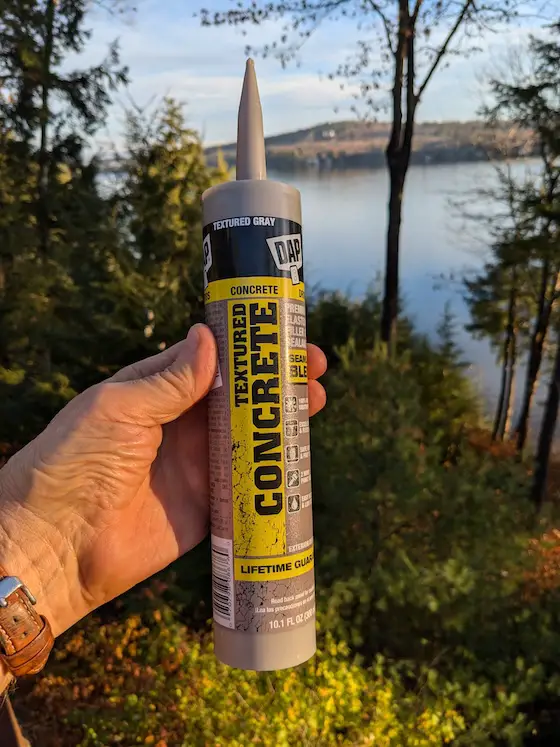
Don't be fooled by the label. This will fill a crack in the concrete. Make sure your child buys it so you get the longest warranty. Photo credit: Tim Carter Copyright 2024
The text conversation started to get a little contentious. At that point, I decided to end the conversation for fear of blowing up the relationship.
Here’s the kicker. Hours later she called me on the phone as if nothing happened. She told me, “Guess what? I found what caused the leak. A gallon jug of drinking water up on a shelf sprung a leak! It had nothing to do with the crack at all!”
Are you like this woman? Do you trust everything is going to be done right? Don’t hope. Use the concrete epoxy with fiberglass tape. The epoxy has a 2,900-pounds-per-square-inch tensile strength. That’s over seven times the tensile strength of the concrete. CLICK HERE to get the best epoxy.
Column 1586
